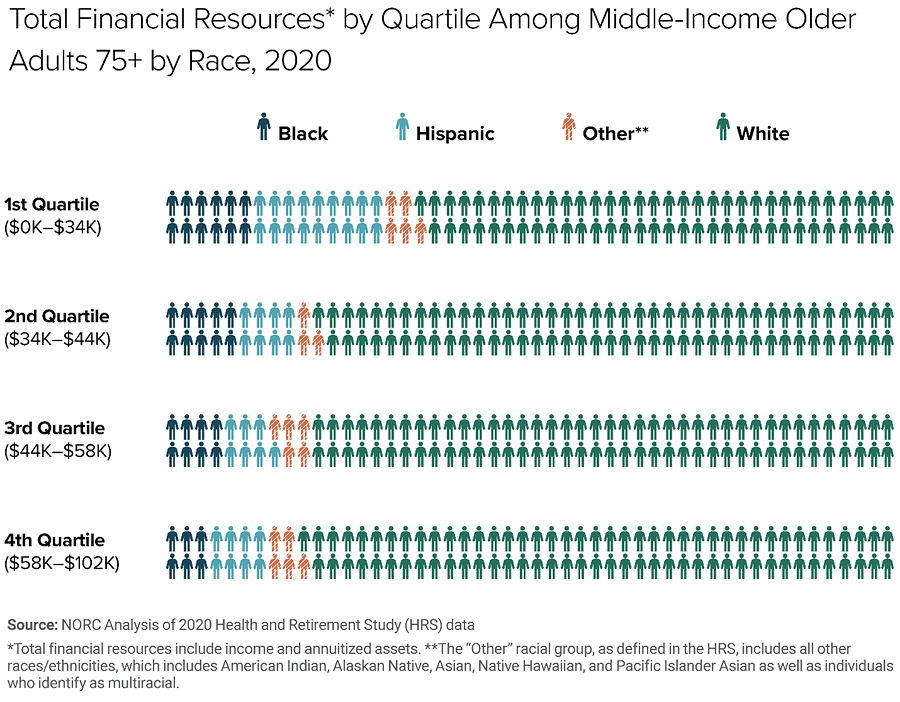CHICAGO — Millions of Black and Hispanic middle-income older adults will lack the financial resources to pay for seniors housing and healthcare expenses as they age, according to new findings from NORC at the University of Chicago’s “Forgotten Middle” study commissioned by The SCAN Foundation.
The analysis shows the number of middle-income older adults of color will increase from 12 percent in 2020 to 25 percent by 2035, yet this population will be least likely to afford seniors housing and care when compared to the middle-income older adult population as a whole.
The study points to widening gaps among Black and Hispanic middle-income older adults around home ownership, home equity, financial assets and marriage rates compared to their white peers. This results in fewer financial resources to afford seniors housing and care. Case studies and an analysis of existing literature highlight the challenges middle-income older adults may face in rural areas.
“Wealth is not distributed evenly across the Forgotten Middle. Now we know that Black and Hispanic older adults are the worst off,” says Sarah Rayel, senior director in NORC’s Health Care Strategy department. “Black and Hispanic middle-income older adults have fewer liquid assets and less equity than other middle-income older adults, which is making it harder to leverage their home to support future housing and health care needs.”
The “Forgotten Middle” consists of older adults aged 75+ who do not qualify for Medicaid but lack sufficient resources to pay for assisted living, seniors housing and future care needs as they encounter age-related physical and cognitive challenges. Consistent with previous NORC research, middle-income older adults are defined as having annuitized income and assets ranging from $26,000 to $103,000 in 2020 dollars.
The analysis is NORC’s third follow-up to its landmark 2019 Forgotten Middle study. NORC’s Health Care Strategy team used 2020 Health and Retirement Study (HRS) data to examine historically marginalized and minoritized groups within the middle-income older adult population. Researchers examined finances, housing, family structures, and health status — all attributes that may affect the ability to age according to one’s wishes — segmented by race and ethnicity to understand the impact of these factors across racial and ethnic groups.
To view the full analysis, click here.

